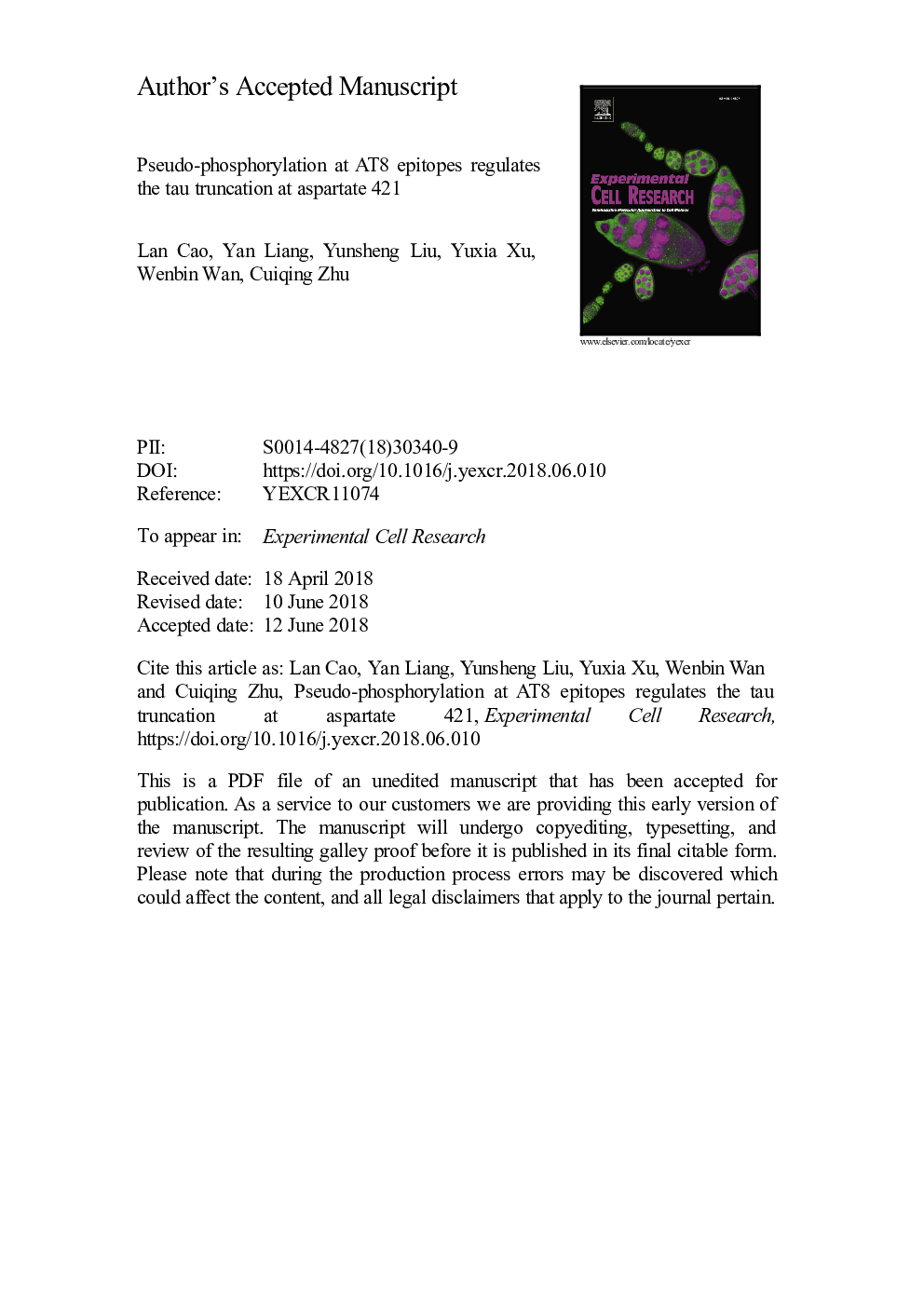| Article ID | Journal | Published Year | Pages | File Type |
|---|---|---|---|---|
| 8450273 | Experimental Cell Research | 2018 | 32 Pages |
Abstract
Tau pathology in Alzheimer's disease (AD) includes hyperphosphorylation and truncation of tau. Phosphorylation at S422 is found to suppress truncation of tau at D421 that leading to the generation of ÎTau. However, the interrelation between hyperphosphorylation and generation of ÎTau in AD remains elusive. In current study, staurosporine (Stau) induced ÎTau generation by caspases in SH-SY5Y cells with tau overexpression was found to be accompanied by a dramatic dephosphorylation at S422 and the epitope of the diagnostic antibody AT8 (S199â¯+â¯S202â¯+â¯T205), but a moderate dephosphorylation of PHF1 (S396â¯+â¯S404) epitope. Therefore, to explore the effect of AT8 epitope on tau truncation, the residues in AT8 epitope were mutated to produce “pseudo-phosphorylated” (AT8E) or “pseudo-unphosphorylated” (AT8A) tau constructs. With Stau treatment, the generation of ÎTau from tau-AT8E was significantly attenuated comparing with that from tau-AT8A, which was S422-independent in that addition of S422A mutation still preserved this effect. Interestingly, this modulatory effect was able to be reversed by addition of PHF1E mutation. Moreover, treating the crude tau extracts with recombinant caspase-3 in vitro, also showed that ÎTau level was suppressed by AT8E, and potentiated by AT8E + PHF1E. The results primarily revealed the modulating effects of phosphorylation on ÎTau generation which may have potential implications in tau pathological processes and therapeutic intervention.
Related Topics
Life Sciences
Biochemistry, Genetics and Molecular Biology
Cancer Research
Authors
Lan Cao, Yan Liang, Yunsheng Liu, Yuxia Xu, Wenbin Wan, Cuiqing Zhu,
